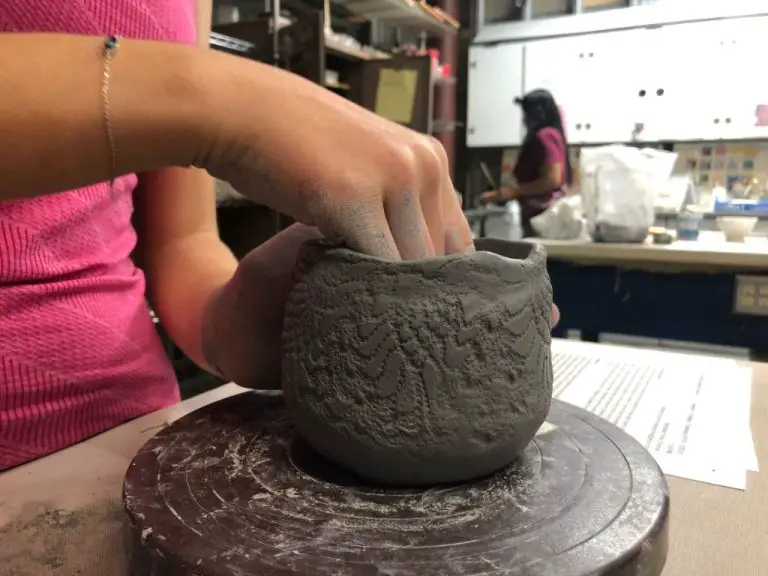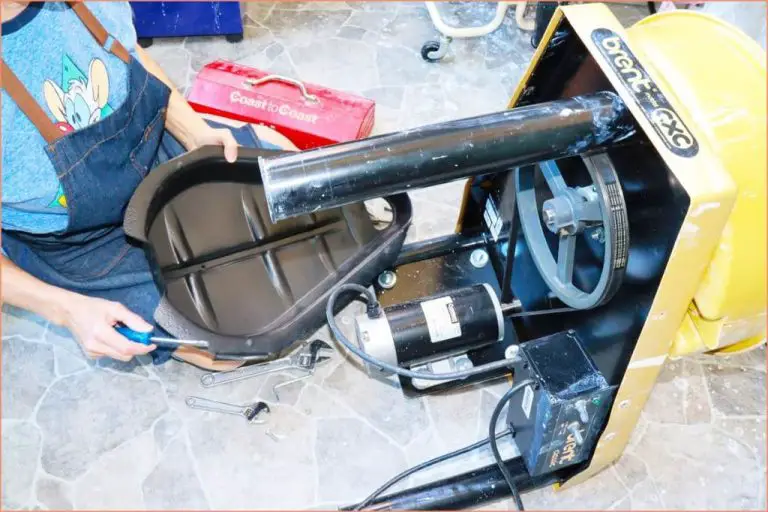How Do You Use A Bat Gripper?
What is a Bat Gripper?
A bat gripper, sometimes called a bat jitter, is a special device that is fitted onto the handle of a baseball or softball bat. The purpose of a bat gripper is to improve the batter’s grip on the bat in order to have more control while swinging and making contact with the ball (Etsy). Bat grippers work by adding extra friction and tackiness to the bat handle, preventing the batter’s hands from slipping or losing control. They can help reduce bat flutter or movement of the bat during the swing.
Bat grippers come in a few different styles but generally consist of a sleeve or wrap made of silicone, rubber, or synthetic materials that slides onto the bat handle and stays securely in place. They add cushioning while also providing a non-slip, sticky surface for improved grip and control. Bat grippers are an inexpensive and effective way for baseball and softball players to optimize their grip and take their hitting to the next level.
Types of Bat Grippers
There are three main types of bat grippers available:
-
Tape grippers: These involve wrapping tape, such as lizard skin tape, around the handle of the bat to improve grip. The tape can create friction and tackiness for better control.
-
Rubber sleeve grippers: Rubber sleeves fit over the handle of the bat to cushion vibrations and provide grip. Brands like Kookaburra offer textured rubber grippers.
-
Molded grip enhancers: These molded grips slide onto the bottom of the bat’s handle and create an enlarged, grooved shape for optimal hand placement and anti-slip grip.
The key differences come down to the material (tape, rubber, molded padding) and application (wrap, slide on, sleeve). Most aim to maximize comfort, shock absorption, and grip.
Benefits of Using a Bat Gripper
Using a bat gripper provides several key benefits for baseball and softball players:
Better Grip – Bat grippers create a tacky, textured surface that improves grip and reduces the chance of the bat slipping in your hands. The friction from the grip allows you to swing with more control and confidence.
More Control – The enhanced grip leads to increased bat control, allowing you to have finer manipulation of the bat throughout the swing. This can lead to making better contact with the ball. According to Active Kids, bat grippers give you more control over your swing for optimal hitting.
Reduces Bat Sting – Bat grippers can dampen negative vibrations and feedback that cause bat sting in the hands. The gripper’s cushioning effect helps diminish the energy and shock transferred to your hands upon impact with the ball.
Overall, bat grippers give you a secure, slip-resistant hold on the bat for better performance. Their tactile grip and shock-absorbing qualities lead to improved swing control and less painful bat sting.
Proper Hand Placement
Proper hand placement is critical for getting the most out of your bat gripper and optimizing your hitting technique. Here are some key tips on where to grip both with and without a bat gripper:
Without a Bat Gripper:
- Place the knuckles of your top hand directly in line with the center of the bat barrel for maximum control and power transfer.
- Align your bottom hand pinky on the bat’s knob, keeping the palm facing up toward the pitcher.
- Keep hands together and avoid opening up too quickly during the swing.
With a Bat Gripper:
- Slide the bat through the gripper tunnels so your hands make contact with the neoprene pads inside.
- Grip the neoprene pads firmly to keep full control of the bat.
- Maintain the same ideal hand positioning as you would without the gripper.
- Let the gripper provide cushioning and anti-vibration benefits without compromising your hitting mechanics.
Proper hand placement provides maximum bat control, comfort, and power transfer. Whether using a gripper or not, focus on keeping the hands and knuckles properly aligned throughout the swing.
How to Apply a Bat Gripper
Applying a bat gripper is easy and only takes a few minutes. There are three main types of bat grippers – tape, sleeve, and molded.
Tape Bat Grippers
For tape bat grippers, start by cleaning the handle of the bat thoroughly to remove any dirt, pine tar, or existing tape. Make sure the surface is completely dry.
Unwrap the new bat tape and tear off a piece that will wrap fully around the bat handle with a slight overlap. Remove the adhesive backing.
With the sticky side facing the bat, apply one end of the tape at the bottom of the handle and wrap upward, keeping it tight and even as you overlap. Cover the entire handle up to the knob.
Smooth any wrinkles and press the tape firmly to adhere it to the bat. Trim off any excess tape at the ends.
Sleeve Bat Grippers
For sleeve grippers, slide your hand into the open end of the sleeve and pull it up your arm. Pick up the bat and slide the bat handle all the way into the sleeve.
Align the sleeve opening at the knob of the bat. The sleeve should fit snugly on the handle. Adjust the sleeve tabs around the knob as needed to secure it.
Make sure the material is smooth with no creases or wrinkles. The sleeve should not slide around on the bat handle.
Molded Bat Grippers
For molded grippers, start by ensuring the bat handle is clean and dry. Separate the two halves of the molded gripper.
Holding one half in each hand, place the gripper around the bat handle, aligning the molded finger grooves to your hand position.
Press the two halves firmly together until they click into place fully encasing the bat handle. Make sure it is secure with no gaps.
Adjust your hands within the molded finger holds on each side to find your optimal grip position.
Using a Bat Gripper While Hitting
One of the main benefits of using a bat gripper when hitting is that it helps keep your hands from slipping on the bat. As you swing, the centrifugal force and vibration from bat-ball contact can cause your hands to shift or loosen slightly. The tacky material of the bat gripper ensures your grip stays locked in throughout the swing. This gives you better bat control and allows you to fully transfer power into the ball.
Additionally, a bat gripper helps absorb vibrations from hitting. Aluminum and composite bats especially can sting your hands when you mishit a ball. The cushioned material of a gripper dampens these unpleasant vibrations so your hands don’t go numb. This makes hitting more comfortable and allows you to maintain your grip strength throughout games or practice.
As noted in this article on gripping a baseball bat, most Major League hitters use pine tar or batting gloves for a similar effect – a better grip and reduction in sting. The same benefits apply when using a dedicated bat gripper product on youth or amateur levels as well.
Using a Bat Gripper While Fielding
A bat gripper can provide a secure grip when catching a batted ball in the field. The tacky surface helps prevent the bat from slipping out of your hands on contact, especially if the ball hits the end of the bat. To use a bat gripper for fielding:
Position your hands properly on the bat handle with the gripper applied. Grip the bat just above the knob with your bottom hand and place your top hand just above with knuckles aligned (source).
Keep your index fingers pointed down the barrel as you hold the bat out and ready. Point the bat tip up slightly while waiting for the pitch.
Move quickly to field balls hit near you. As the ball approaches, tilt the bat downwards slightly to match the ball’s trajectory.
Allow the ball to contact the bat firmly near the sweet spot, absorbing the impact through your grip. The gripper helps prevent slippage.
After fielding the ball, transition smoothly into your throw to the desired base.
Caring for Your Bat Gripper
Properly caring for your bat gripper will help extend its lifespan and performance. Here are some tips for cleaning and storing your gripper:
Clean the gripper regularly with a soft cloth dampened with mild soap and water. Avoid using harsh chemicals or solvents that could damage the material (Source: https://axebat.com/blogs/news/how-to-properly-care-for-your-axe-bat). Gently scrub off any dried dirt or residue.
When removing old tape or glue, use a residue remover specifically designed for bat grips. Apply the cleaner and let it sit for a few minutes before scrubbing with a rag (Source: https://www.ifixit.com/Guide/Replacing+a+Baseball+Bat+Grip/49227). This will help avoid damaging the underlying grip.
After cleaning, make sure to thoroughly dry the gripper before storing. Leaving moisture behind could cause mold or damage.
Store the bat gripper in a cool, dry place out of direct sunlight when not in use. Avoid extremes of hot or cold temperature.
Periodically check the gripper for signs of wear, such as cracks, thinning material, or slipping on the handle. Replace grippers as needed to maintain safety and performance.
Safety Considerations
Proper fit of the bat gripper is crucial for safe usage and preventing injury. Make sure the gripper is snug on the bat handle without any slipping or excess movement (https://sleefs.com/products/geo-yellow-black-bat-grip). Regularly check the condition of your bat gripper and look for signs of wear, such as thinning material, smoothing/flattening of the grip texture, or cracks/tears (https://sleefs.com/products/safety-yellow-bat-grip). If you notice any of these issues, it’s time to replace your gripper.
Also inspect the gripper after every hit, especially if you feel any hand sting or vibration. Make sure the material is still firmly attached and providing shock absorption. Never use a damaged or worn out gripper, as it will no longer protect your hands properly. Replace deteriorated grippers as soon as possible.
Additionally, ensure a proper grip and hand positioning when holding the bat. Gripping too tight or improper hand placement can still lead to injury even with a gripper. Follow the manufacturer’s directions for ideal hand positioning.
With routine inspection and replacement when needed, bat grippers can significantly reduce hand sting and vibration. But always use caution and proper technique for the safest experience.
When to Replace Your Gripper
Even the most durable bat grips will show signs of wear over time and eventually need replacing. The main signs that indicate it’s time for a new bat gripper include:
- The grip feels slick or sticky. A worn grip will lose its tackiness and feel slippery in your hands.
- There are rips, tears or peeling edges. Look for any gaps, holes or fraying on the grip, which indicate it is breaking down.
- You notice hardening or brittleness. Grippers may dry out and crack over time.
- It lacks cushioning. Replace if the shock absorption is gone.
- You see exposed adhesive. This sticky residue means the top layer has come off.
- There is a color change. Fading or discoloration points to UV damage.
- It slides up or down while hitting or fielding. Proper adhesion is important.
Depending on frequency of use and storage conditions, most quality bat grips should provide 6-12 months of performance before needing replacement. Higher-end grips may last 1-2 seasons. Inspect regularly for wear and don’t wait for complete failure. A worn-out gripper won’t provide the traction, cushioning and shock absorption needed for optimal hitting and fielding.




